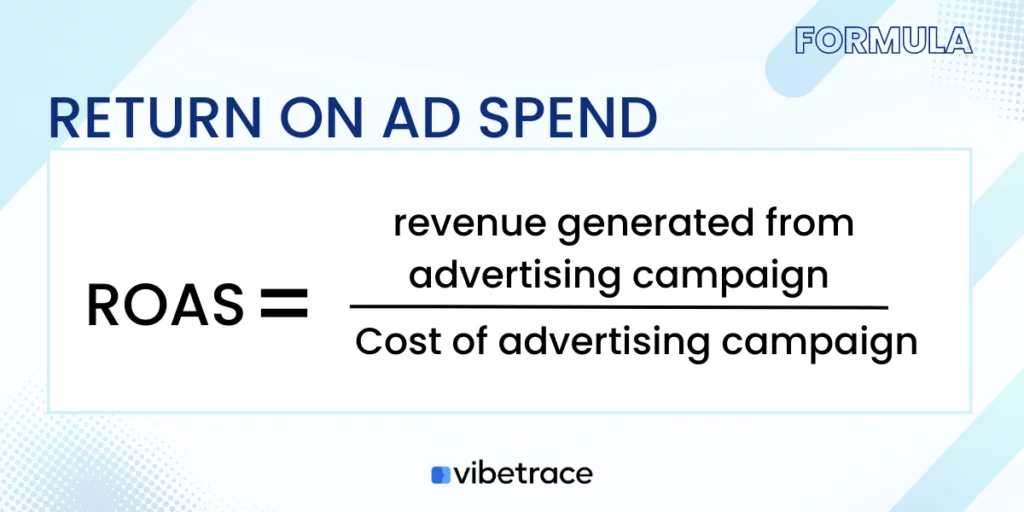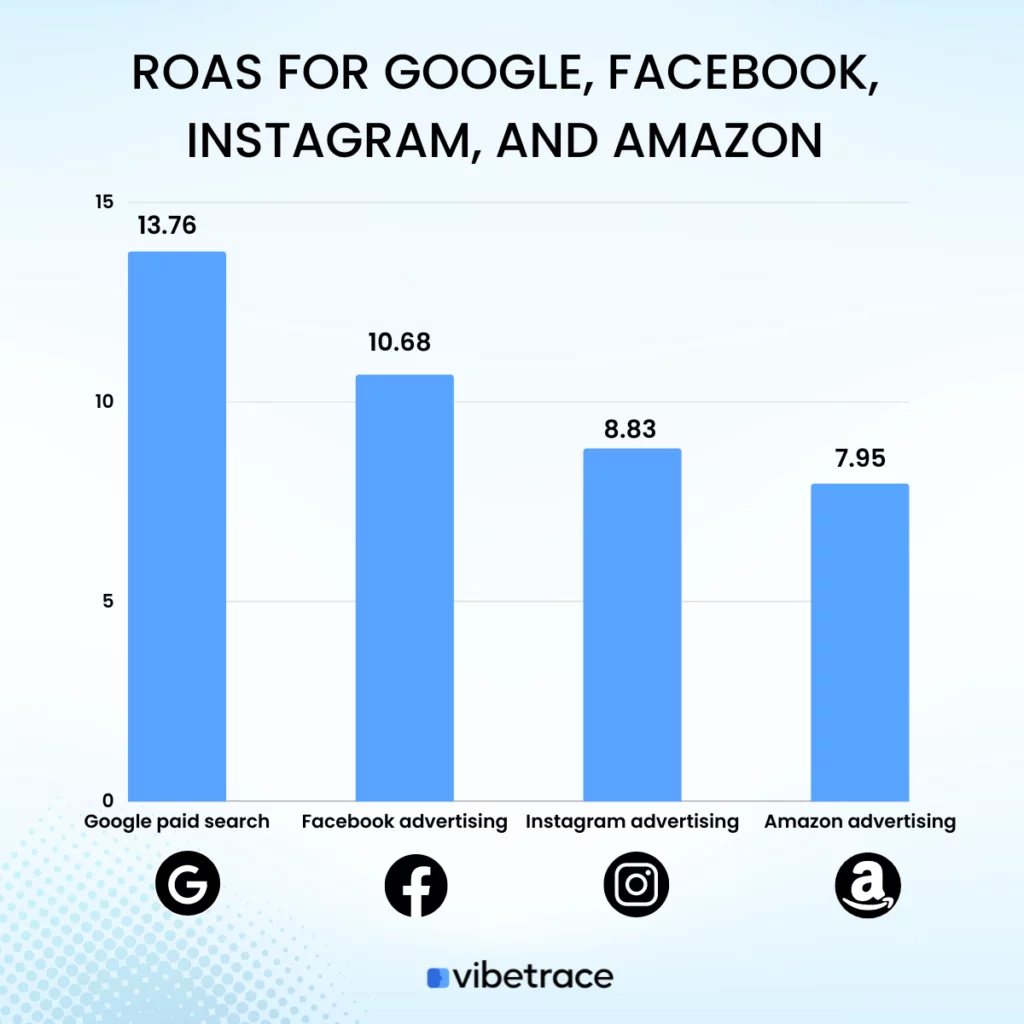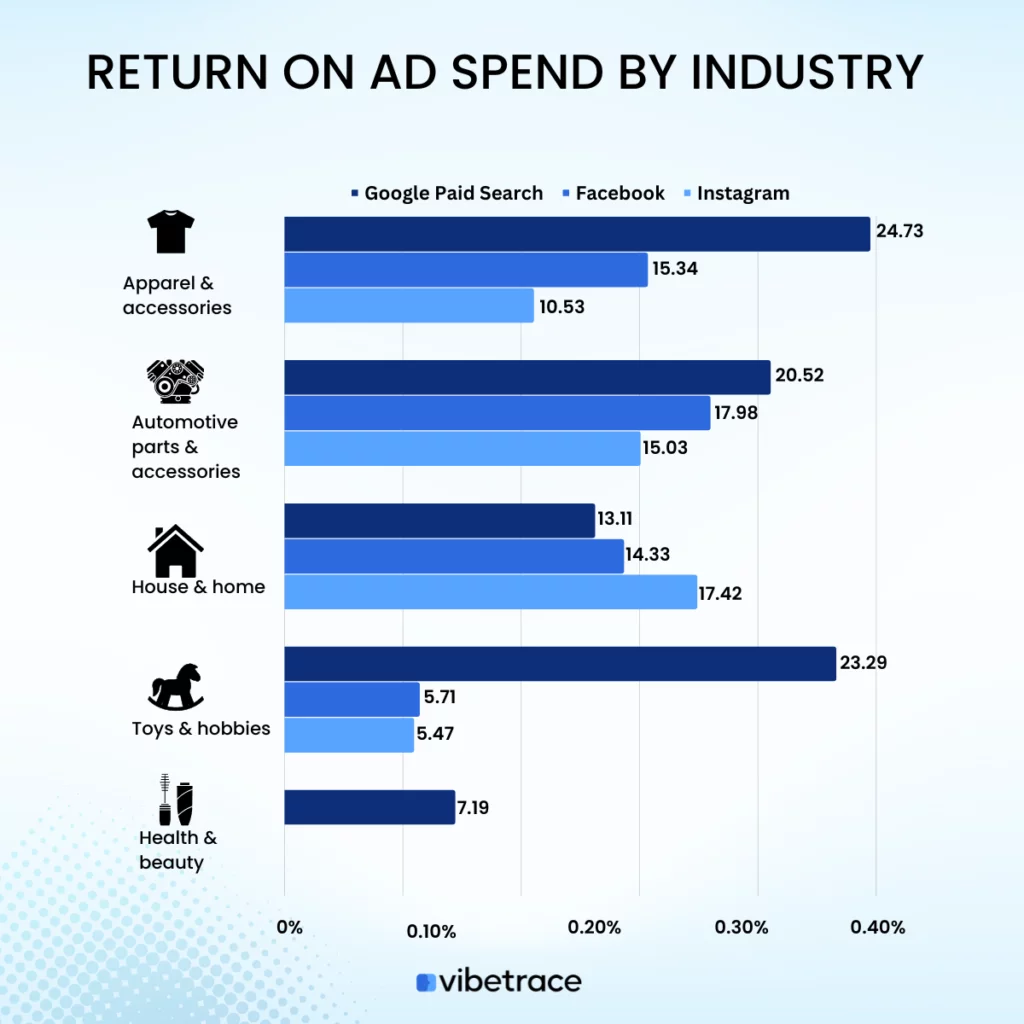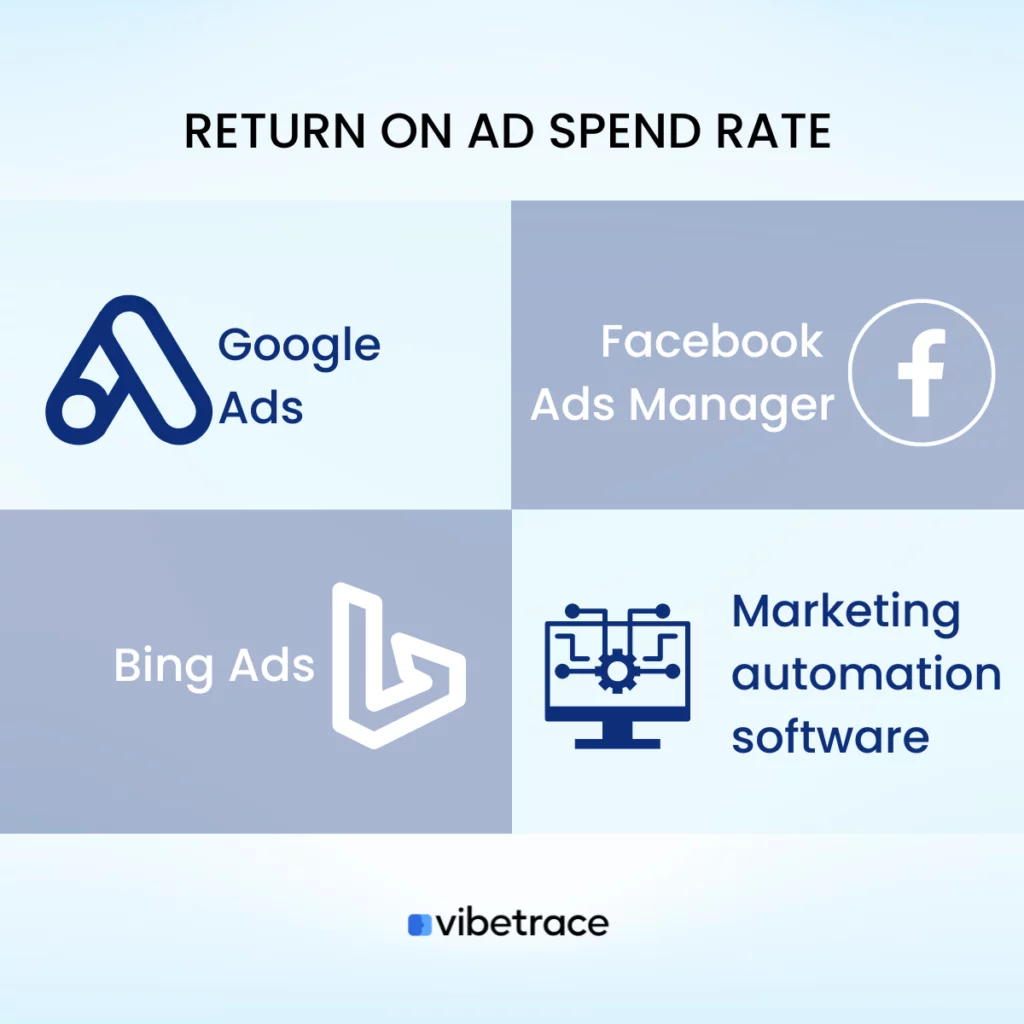Return on Ad Spend (ROAS) is a marketing metric that provides insight into how much revenue your marketing campaigns generate after advertising efforts.
ROAS helps you understand the effectiveness of your advertising in achieving your business objectives.
As a result, you can improve your business marketing strategy and build a larger audience, which will help you earn more. Improve ROAS alongside other metrics such as return on investment, revenue, conversion rate, and more.
In the past years there are discussions on what metric is more important: Roas or Poas.
What is Return on Ad Spend?
Definition of Return on Ad Spend
Return on Ad Spend (ROAS) is a marketing metric that measures the amount of revenue generated for every dollar spent on advertising.
It helps businesses determine the effectiveness of advertising campaigns by measuring the return on investment (ROI) for their ad spend.
ROAS is an important metric for businesses because it helps in optimizing advertising spend to maximize revenue for marketing/advertising campaigns and achieve business objectives.
By tracking ROAS over time, you can identify which campaigns are most effective and adjust their marketing strategies accordingly. Also have a look on our article about Roas vs Poas
Return on Ad Spend Formula

ROAS is calculated by dividing the revenue generated from an advertising campaign by the amount spent on that campaign.
For example, if a company spends $1,000 on advertising and generates $5,000 in revenue, the ROAS would be 5 (i.e., $5,000 in revenue divided by $1,000 in ad spend).
Return on Ad Spend Benchmarks by Industry
The ideal Return on Ad Spend (ROAS) can vary depending on the industry, competition, and other factors. Here are some benchmarks for ROAS by industry:
- E-commerce: A good ROAS for e-commerce businesses is typically around 4:1 or higher, meaning that for every dollar spent on advertising, the business generates $4 or more in revenue.
- Retail: Retail businesses generally aim for a ROAS of at least 3:1, but some may be able to achieve higher returns, depending on the type of products they sell and their target audience.
- B2B: Business-to-business (B2B) companies typically have a longer sales cycle and higher ticket prices, so a good ROAS for B2B businesses may be lower, around 2:1 or higher.
- Services: Service-based businesses, such as consulting firms or law offices, may have a higher ROAS target, around 6:1 or more, as they typically have higher profit margins.
What is a good ROAS?
For ecommerce is should be at least 4. (depending on your margin)
For B2B it can be 2. (because of longer sales cycle and services costs)
It’s important to note that these benchmarks are general guidelines, and the ideal ROAS can vary based on the specific goals and objectives of your business.
It’s important to track and analyze your own ROAS over time to optimize your advertising spend and achieve your marketing objectives.
If you wish to benchmark your brand against others in your industry, the advertising tool Sidecar has published a benchmark report that you can refer to.
The report details the average ROAS for Google, Facebook, Instagram, and Amazon, all of which have seen an increase over the past year.
Sidecar’s research reveals the following average retail ROAS metrics for each platform:

- Google paid search: 13.76
- Facebook advertising: 10.68
- Instagram advertising: 8.83
- Amazon advertising: 7.95
In addition, the report provides average ROAS figures for various industry verticals, some of which are particularly noteworthy.

| Google Paid Search | |||
| Apparel & accessories | 24.73 | 15.34 | 10.53 |
| Automotive parts & accessories | 20.52 | 17.98 | 15.03 |
| House & home | 13.11 | 14.33 | 17.42 |
| Toys & hobbies | 23.29 | 5.71 | 5.47 |
| Health & beauty | 7.19 |
The data provided contains Return on Ad Spend (ROAS) figures for three different advertising channels – Google Paid Search, Facebook, and Instagram, across various industries.
For the Apparel & Accessories industry, Google Paid Search has the highest ROAS figure at 24.73, followed by Facebook at 15.34, and Instagram at 10.53.
The Automotive Parts & Accessories industry also has a high ROAS figure for Google Paid Search at 20.52, followed by Facebook at 17.98, and Instagram at 15.03.
In the House & Home industry, Instagram has the highest ROAS figure at 17.42, followed by Facebook at 14.33, and Google Paid Search at 13.11.
For the Toys & Hobbies industry, Google Paid Search has the highest ROAS figure at 23.29, while Facebook and Instagram have lower ROAS figures at 5.71 and 5.47, respectively.
The Health & Beauty industry only has data available for Google Paid Search, which has a ROAS figure of 7.19.
Overall, the data suggests that Google Paid Search is generally the most effective advertising channel for most industries, while Facebook and Instagram have varying levels of effectiveness depending on the industry.
It is important to note that other factors, such as target audience, campaign strategy, and ad content, can also significantly impact the ROAS figures.
How to track Return on Ad Spend?
There are various tools that businesses can use to track Return on Ad Spend (ROAS). Here are some popular tools:

Google Ads: You can effectively track your Return on Ad Spend (ROAS) for search, display, and video ads using Google Ads. By combining Google Analytics with your Google Ads account and setting up conversion tracking, you can monitor the revenue generated by your advertising campaigns.
Facebook Ads Manager: With Facebook Ads Manager, you have the ability to monitor your ROAS for Facebook and Instagram ads. You can set up conversion tracking and track the revenue generated by your ads in real-time.
Bing Ads: You can track your ROAS for search ads using the Microsoft platform, Bing Ads. By setting up conversion tracking, you can monitor the revenue generated by your ads
Marketing automation software: Marketing automation software, such as HubSpot or Marketo, can help you track your ROAS by providing insights into the entire marketing and sales funnel, from lead generation to conversion. Try Vibetrace now!
Select the appropriate tool that aligns with your business requirements and advertising objectives.
By tracking your ROAS over time, it will be easier for you to optimize your advertising spend and achieve a better return on investment for your marketing campaigns
Do you like this article?
Join our CX for Retail dedicated newsletter!

Stay connected to what’s really important to optimize your digital revenues.
By clicking the button, you accept our Terms & Conditions. Also you will need to confirm your email address.
How often should you check Return on Ad Spend?
The frequency with which you should check Return on Ad Spend (ROAS) depends on the length of your sales cycle, the type of advertising campaigns you are running, and your business goals.
- If your business has longer sales cycles or larger ticket items, it may take longer to see the impact of advertising campaigns on revenue. In this case, checking ROAS on a monthly or quarterly basis may be more appropriate.
- On the other hand, If you businesses with shorter sales cycles or smaller ticket items, it may be beneficial for you to check ROAS more frequently, such as weekly or bi-weekly.
Ultimately, it’s important to strike a balance between monitoring ROAS frequently enough to optimize your advertising spend, while also giving your campaigns enough time to generate meaningful results.
While ROAS is an important metric to track, it shouldn’t be the only one. To gain a more comprehensive understanding of your advertising performance, it’s best to consider other metrics such as click-through rate, conversion rate, and cost per acquisition.
Return on Ad Spend Calculator
Do you want to calculate your return on ad spend? Use our simple calculator below.
Simple Roas Calculator
Important Things about Return on Ad Spend
Here are some important things to keep in mind about Return on Ad Spend (ROAS):
Measures effectiveness advertising campaigns: ROAS helps you understand how much revenue you generate for every dollar spent on advertising.
Boosts revenue: ROAS is an important metric for businesses because it helps you optimize your advertising spend to maximize your revenue and achieve your marketing objectives.
Varies by Industry: The ideal ROAS can vary depending on your industry, competition, and other factors. It’s important to track your own ROAS over time to understand what is considered a good return on investment for your business.
Best computed alongside other metrics: ROAS should not be the only metric you track. It’s important to consider other metrics, such as click-through rate, conversion rate, and cost per acquisition, to get a more comprehensive view of your advertising performance.
Optimize your advertising spend and achieve a better return on investment for your marketing campaigns!
Metrics related to Return on Ad Spend
Here are some metrics related to Return on Ad Spend (ROAS):
Gross Margin
Indicates if the business is generating a high-profit margin on its products.
Customer Lifetime Value
The estimated total value of a customer to a business over the course of their lifetime
Customer Acquisition Cost
The cost of acquiring a new customer, including marketing and sales expenses.
Customer Lifetime Value
The estimated total value of a customer to a business over the course of their lifetime
Vibetrace is a marketing automation platform that can help you track your return on ad spend (ROAS) by providing real-time data on customer behavior and campaign performance.
It can integrate with various advertising channels and provide insights on which campaigns and channels are generating the best results.
With Vibetrace, you can also segment your audience and personalize their marketing efforts to increase engagement and conversions.

